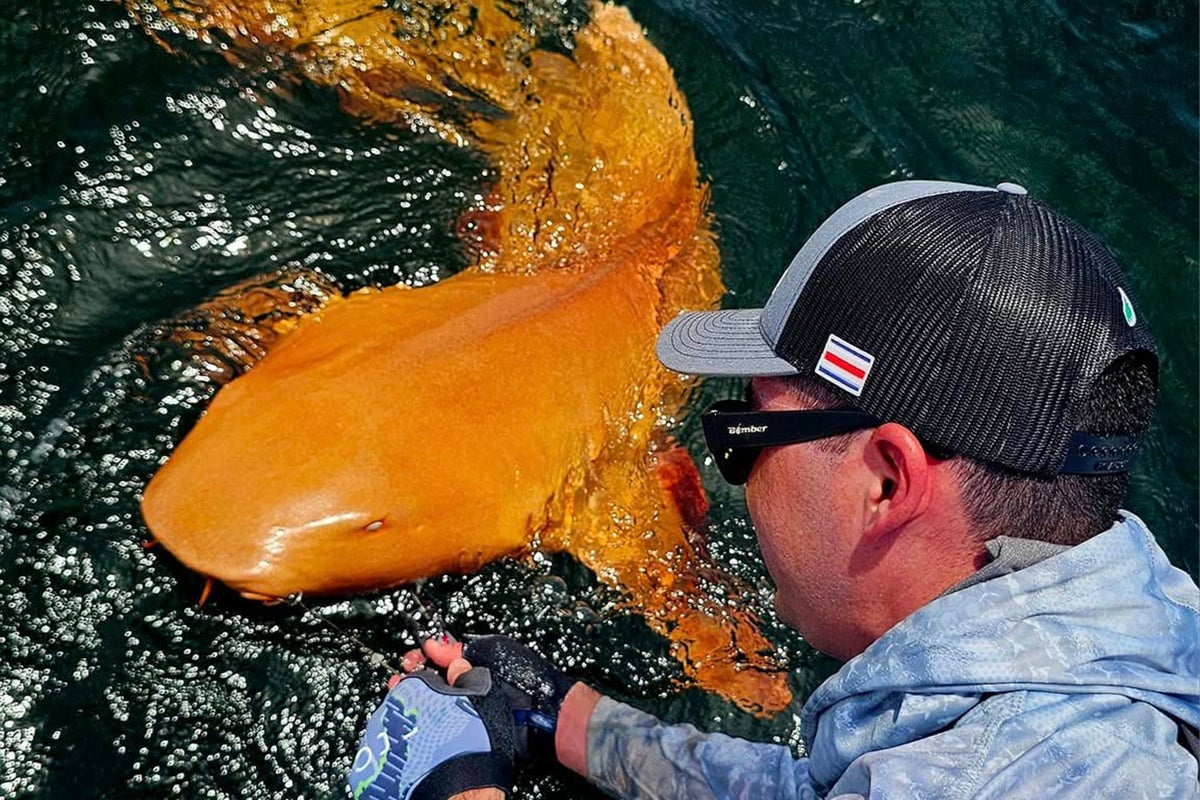
A shark with a striking orange appearance caused by a rare skin condition has been caught off the coast of Costa Rica.
The nurse shark, which measured more than six feet long, stood out from the species’ usual brown colouring. The shark was captured on a sport fishing trip near Tortuguero National Park, at a depth of 37 metres.
Researchers believe the unusual appearance was caused by xanthism – also known as xanthochroism – a pigmentation condition that creates excessive yellow or golden colours in the animals’ skin due to a lack of red pigmentation.
The rare condition has never been seen in cartilaginous fish, a group that includes sharks, rays, and skates, in the Caribbean before, according to Federal University of Rio Grande research.
The shark also showed traits of albinism, including a pair of striking white eyes.
Nurse sharks usually have brown skin to help them blend into the seabed. Having bright orange skin, or white eyes in the case of albinism, makes them more visible and therefore more vulnerable to predators in the wild.
Unlike most sharks, who must continuously swim to breathe, the nurse species has a special buccal pump that allows them to breathe without swimming.
While some researchers argue that animals with xanthism face lower survival rates, the scientists believe this case shows that may not be the case.
Its discovery has prompted questions about the genetic make-up in local nurse shark populations.
The condition is usually caused by a genetic mutation, but other factors, including diet, can also influence pigmentation.
“Further research is needed to explore potential genetic or environmental factors influencing this rare pigmentation anomaly in sharks,” the researchers said.
Xanthism is considered extremely rare across the animal kingdom, with confirmed cases limited to only a handful of fish, reptiles, and birds.
It has produced vivid yellow morphs in freshwater fish, while birds like parrots and canaries have been spotted with golden feathers because of the condition. There have also been occasional reports of unusually yellow snakes and lizards.
The opposite condition, known as axanthism, also exists and is marked by a lack of yellow pigment.
